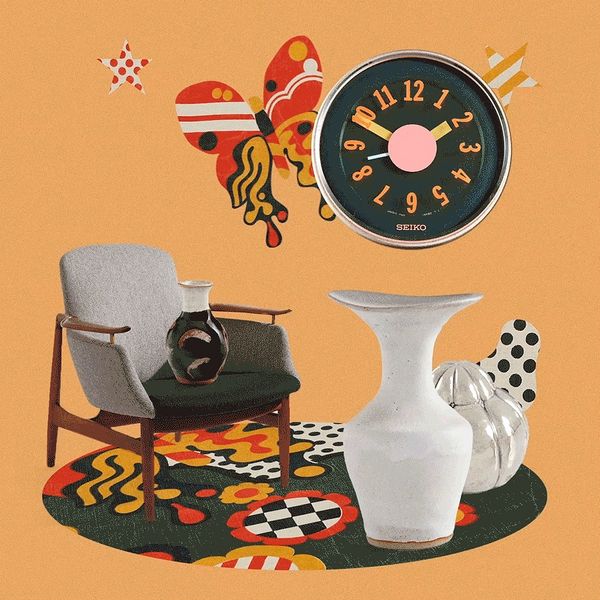Animator: Tamarama Studios.
“No doubt we are seeing the end of the myth of progress, which transforms time into a linear function, where everything changes continually. Maybe we are witnessing a return to circular time, that is, a time when everything changes, however without development” –Andrea Branzi
Sound familiar? Andrea Branzi was referring to the postmodern approach to design here – where do we go after modernism if it’s supposedly the pinnacle of progress? – but his words ring eerily true in the context of 2021. Throughout the twentieth century, designers have responded to transformative events with opinions and solutions regarding what modern life should look like. The objects that we allow into our homes inform how we live our lives and since we’re all spending a lot more time at home, it’s worth looking back at how designers have adapted, through making things, to their own particular circumstances.
Branzi and his co-collaborators in the Italian radical design movement, which originated in late 1960s Florence, dreamed up a new kind of modernity for the post-war era that thumbed its nose at tradition and prevailing ideas of taste. Not unlike the pop art movement emerging at the time in the United Kingdom and United States, they embraced bright colors and references to mass culture. Indeed Branzi’s “Farfalla” textile from 1967, one of the earliest designs from this period, references Roy Lichtenstein’s Ben-Day dots and flattened forms, as well as serial production through the use of the screen-printing process.
A coffee service designed by Nikolay Diulgheroff bears a striking resemblance to the aesthetic of Italian radical design and the Memphis movement but was created under entirely different circumstances. Diulgheroff, a Bulgarian-born artist active in the Italian futurism movement, designed the service in the 1930s for the Fabbrica Ceramiche Giuseppe Mazzotti in Albisola, Italy, the center of the “aeroceramica” movement, which called for decoration inspired by “Fascist events, by aviation and sport.” The “aeroceramica” movement declared its superiority over all other contemporary ceramics, which was a bold statement considering the abundance of great ceramics during this period. In Vienna, female ceramists such as Vally Wieselthier and Dina Kuhn were making expressive, boldly-painted ceramics without precedent. In Japan, as well as in England alongside Bernard Leach, Shoji Hamada created a new form of “folk craft” pottery as part of the larger mingei movement, a return to traditional handicrafts and Japanese identity against the backdrop of Western influence and industrialization (side note: Hamada was one of the first artists to be recognized as a “living national treasure” in Japan, a distinction that was also bestowed upon Kyohei Fujita).
Despite all these innovations over the course of the twentieth century, by 1993 Donald Judd still felt unfulfilled in the chair department. In “It’s Hard to Find a Good Lamp,” he wrote, “It’s impossible to go to the store and buy a chair,” lamenting that “there has been no furniture which is pleasurable to look at, fairly available, and moderate in price.” “'Designer’ Italian furniture is the world’s worst,” he wrote. Was that a direct dig at Memphis? Understandable, perhaps, coming from a minimalist. In his essay Judd outlined the same challenges that have plagued progressive designers throughout the century, such as how do you make good design accessible by keeping costs low, but also maintain quality?
As we step into 2021, designers have a fresh set of challenges to grapple with: how can design be sustainable? More inclusive? How can it contribute to happy and healthy home and work environments? Some of the most successful and interesting emerging architects, such as Leong Leong and architecten de vylder vinck taillieu, place social responsibility at the core of their practices. Branzi’s quote may seem cynical at first, like rolling the boulder up the hill, but it can also be read with optimism and possibility. After all, Branzi created some of the most joyful and poetic furniture of the second half of the twentieth century. Onward and upward.
Discover More from Design Online >

Recommended Reading
